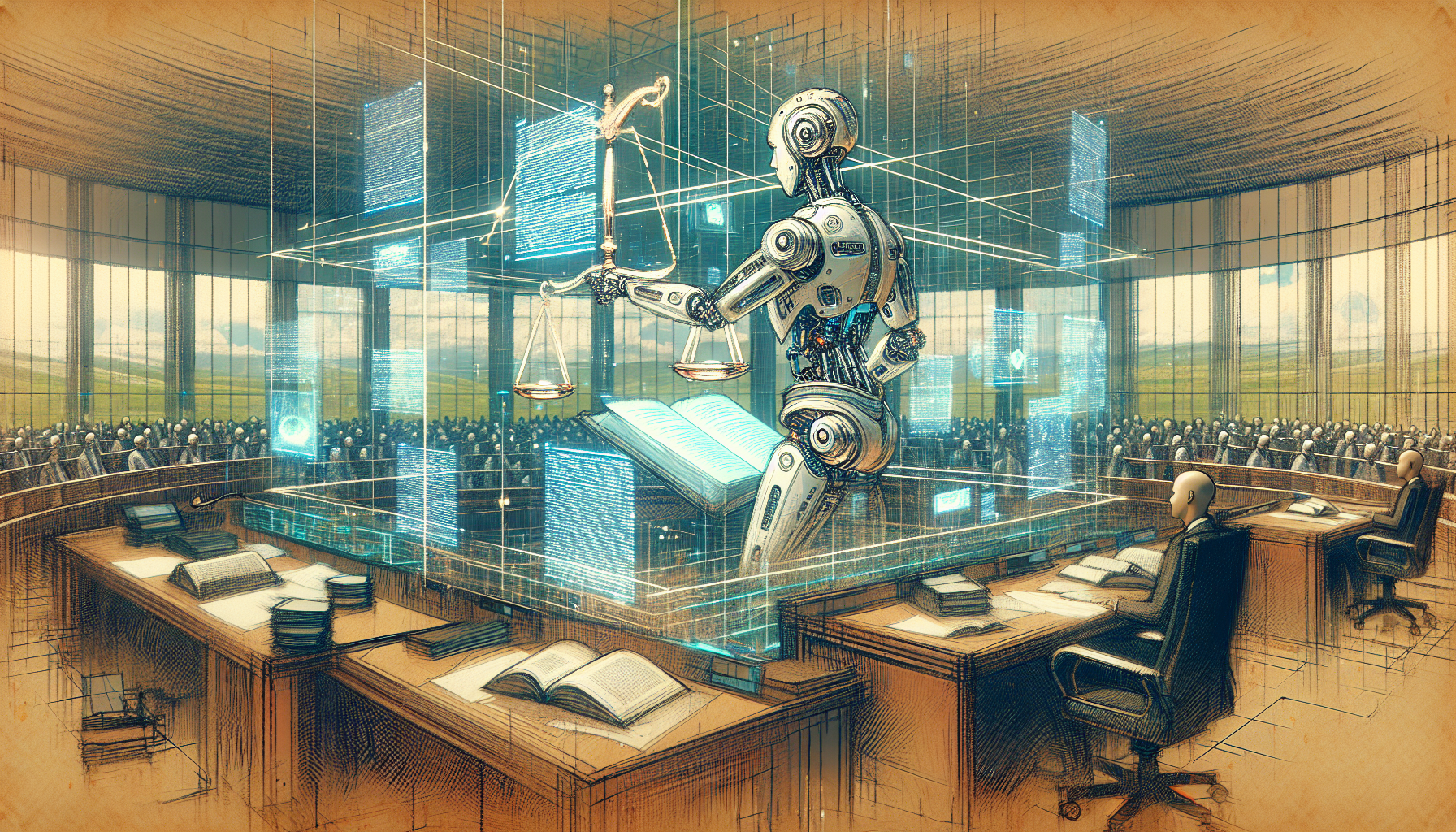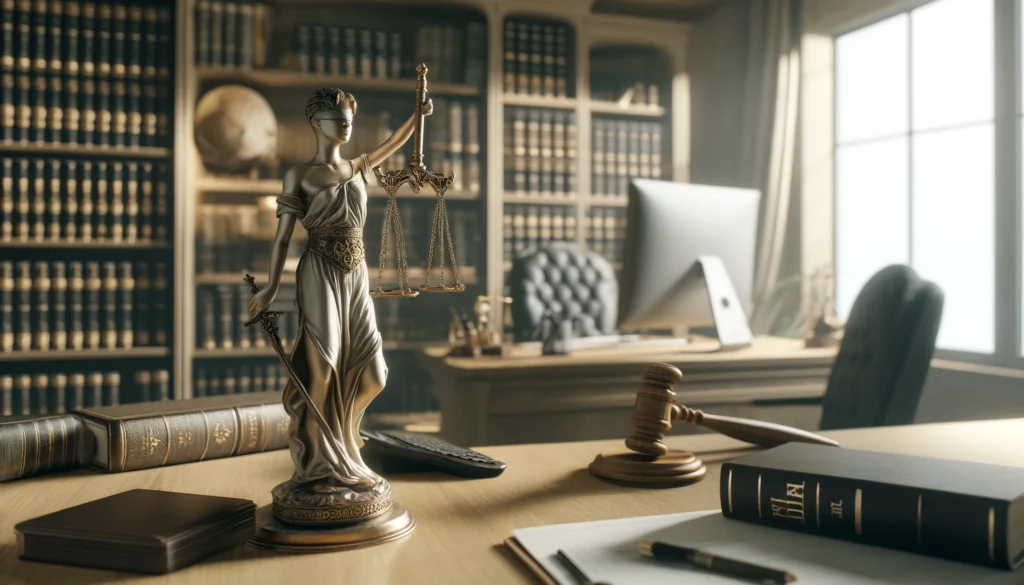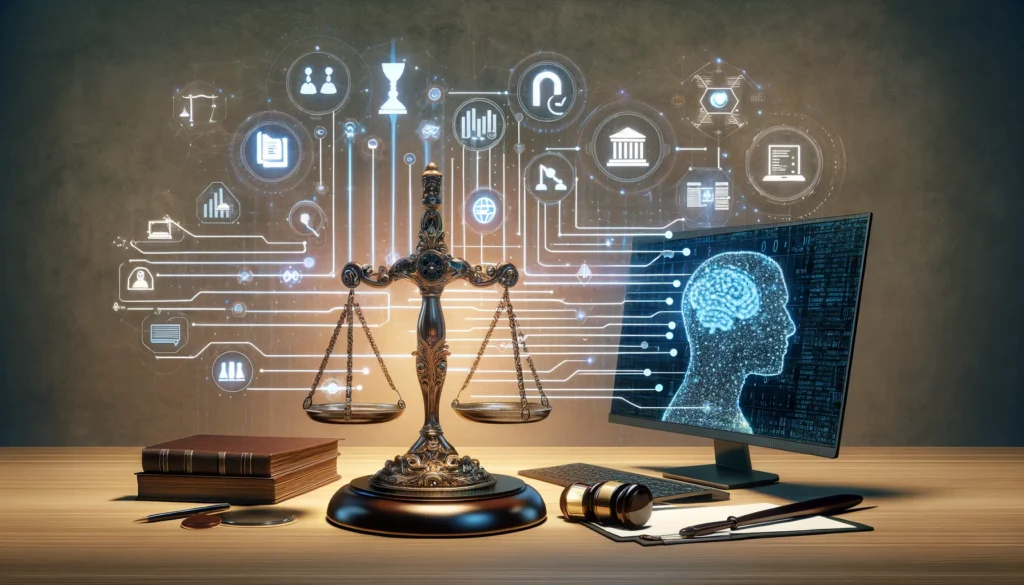
Opening the Gates: Introduction to AI in Legal Drafting
The landscape of the legal profession is undergoing a seismic shift, largely driven by the integration of artificial intelligence (AI) in various domains. Law firms are increasingly embracing large language models (LLMs) like ChatGPT to revolutionize their drafting process. This trend is not just a passing fad but a structural evolution, transforming how legal documents, including corporate partnership agreements, are crafted.
AI brings several advantages to the table, especially in the realm of legal drafting. These benefits include increased efficiency, improved accuracy, and substantial cost savings. By leveraging LLMs for drafting, legal firms are not only cutting down on extensive man-hours but are also minimizing the potential for human error, thereby increasing the overall quality of their output.
With this backdrop, it becomes imperative to understand how to prep and integrate such AI technologies seamlessly into your legal workflow.
Prepping the Battlefield: Initial Setup and Integration
Before diving into the intricacies of using ChatGPT for legal drafting, it’s essential to set the stage for a successful rollout. The first step starts with choosing the right large language model that fits your firm’s needs. While ChatGPT by OpenAI is a popular choice, you might consider other LLMs based on specific requirements and capabilities.
Choosing the Right LLM
- Assess available LLMs and their customization options.
- Consider their ability to understand legal terminologies and local regulations.
Integrating ChatGPT into Your Workflow
- API Integration: Ensure that ChatGPT can be accessed effortlessly within your existing platforms.
- User Training: Conduct training sessions to familiarize your team with the AI interface.
Setting Up Secure and Confidential Channels
- Enable end-to-end encryption to ensure confidentiality.
- Regularly update security protocols and monitor for breaches.
Once the preliminary setup is complete, the next logical step is mastering the art of crafting effective prompts.
The Art of the Prompt: Crafting High-Quality Inputs
The quality of output generated by ChatGPT significantly depends on the quality of the input prompts. Crafting well-structured and specific prompts is a skill that guarantees more tailored and useful drafts.
Techniques for Creating Specific Prompts
- Be precise about what you need: Specify the clauses and legal jargon you need to be included.
- Provide context: Ensure that your prompts offer enough background information.
Using Context to Enhance Output
Adding context is crucial for generating meaningful outputs. For example:
“Draft a confidentiality clause for a corporate partnership agreement where one party shares proprietary technology.”The Importance of Detailed Pre-Prompt Planning
Pre-prompt planning involves outlining the needs of the document before interacting with ChatGPT. This includes identifying key clauses, understanding the applicable legal framework, and considering the specific requirements of the partnership.
With an artful approach to prompting, you can now focus on the essential building blocks of partnership agreements.
Building Blocks: Key Components of Partnership Agreements
A well-drafted corporate partnership agreement serves as the foundation for any business collaboration. The essential components of these agreements must be meticulously crafted to ensure all parties are adequately protected.
Essential Clauses in Corporate Partnership Agreements
- Scope of Partnership: Define the roles and responsibilities of each party.
- Confidentiality: Ensure proprietary information is protected.
- Termination Provisions: Outline the terms under which the partnership can be dissolved.
Tailoring Clauses to Specific Needs
Each business partnership is unique. Thus, clauses need to be adapted to address specific requirements, market conditions, and regulatory environments.
Legal Jargon Simplification via ChatGPT
One of the significant advantages of using ChatGPT is its ability to translate complex legal jargon into more understandable language, making it accessible for stakeholders without legal backgrounds.
Having covered the essential components, we now proceed to the actual drafting stage.
ChatGPT in Action: Step-by-Step Drafting Guide
Using ChatGPT for drafting involves a methodical approach that blends automated efficiency with human oversight. Here’s a step-by-step guide to streamline this process:
Initial Draft Creation: Prompt Examples
Begin by creating the initial draft using well-structured prompts:
- Request Specific Clauses:
“Generate a non-compete clause for a technology partnership agreement.” - Generate Multiple Provisions at Once:
“Create sections for confidentiality, dispute resolution, and termination provisions.”
Refining and Editing Drafts
- Clarifying Ambiguities: Revisit outputs to clarify any ambiguous language. Example:
“Clarify the implication of 'material breach' in the termination clause.” - Cross-Referencing with Existing Agreements: Ensure consistency by comparing new drafts with past agreements.
Compliance and Risk Management Verification using LLMs
Ensure that the drafted agreement adheres to legal standards and minimizes potential risks by integrating compliance checks:
- Run the text through compliance software to identify potential legal pitfalls.
- Use ChatGPT to review and flag any sections that might need legal revision.
After refining the drafts, it’s crucial to conduct a final review to ensure accuracy and comprehensiveness.
Finishing Touches: Review and Validation
Despite the sophistication of AI, human oversight remains essential. Final reviews should involve:
- Ensuring Accuracy and Precision: Manually verify all legal clauses and terminologies to ensure they meet the required standards.
- Final Checks Using ChatGPT: Use the AI to identify any potential inconsistencies or errors in the document. Example:
“Review clause 4.2 and ensure its consistency with clause 3.1.” - Incorporating Human Oversight: Ultimately, a seasoned attorney should review the final draft, incorporating nuanced judgment and experience that AI cannot replicate.
As we fine-tune our documents, we also keep an eye on the horizon for future advancements in AI-driven legal drafting.
Looking Forward: Future Trends in AI-driven Legal Drafting
The integration of AI in legal drafting is only the beginning. Emerging features and capabilities of LLMs promise even more transformative impacts. Advanced algorithms and increased contextual understanding will further streamline the drafting process.
Emerging Features and Capabilities of LLMs
- Enhanced contextual understanding and specificity.
- Real-time legislative updates integrated directly within drafting tools.
Long-Term Impacts on Legal Practices
The long-term implications include a shift towards more efficient workflows, reduced workloads for junior associates, and a focus on higher-level strategic tasks. The future of legal drafting is undoubtedly bright, fostering innovation and efficiency in legal practices.
To wrap things up, let’s revisit the key points and encourage a forward-thinking approach to adopting these technologies.
Wrapping It All Up: Conclusion and Call to Action
In summary, leveraging ChatGPT for corporate partnership agreements offers a host of benefits, from improved efficiency to enhanced accuracy. By adopting a structured approach to integration, careful prompt crafting, and methodical review processes, you can significantly streamline your legal drafting activities.
We encourage legal professionals to experiment with and adopt these advanced AI tools to stay competitive. The future of legal drafting is here, and embracing these technologies will pave the way for more innovative and effective legal practices.


